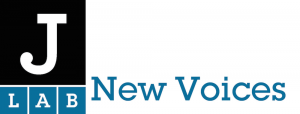With its website live and any fancy financial footwork in its past (see November 2009 report), Intersections: The South L.A. Report is now alive and well. Quite well, in fact, reports Willa Seidenberg, the USC Annenberg professor heading up the initiative, as they have seen tremendous growth in the site’s content this quarter.
“We have fresh stories on the site daily, including a mix of stories reported by USC journalism students, high school students and community residents,” she said.
At the same time, Seidenberg remains focused on efforts to increase traffic and form partnerships with appropriate organizations in the community. The most difficult and time-consuming component, she says, is seeking community participation.
“We realize that fostering an audience and having vibrant community participation will be a long, slow process that will take patience and painstaking old-fashioned, on-the-ground recruiting and publicity. Much of the networking we are doing now has not yet resulted in a swell of activity.”
That said, through partnerships and cross-posting of stories, the site has seen a five-fold increase in visits in the last nine months.
Content Generation
A majority of the content continues to be produced by USC Annenberg students, even during university breaks, says Seidenberg. This comes from Annenberg Radio News (“which features mostly daily, deadline-driven stories), a radio reporting class, undergraduate print reporting classes covering Inglewood and Compton, an undergraduate online class that produced a series called “On Jefferson,” an urban affairs course covering the region and freelance reports by more than a half dozen students.
Highlights this quarter include:
Project manager Emily Henry supplements the site’s reporting. “She has made invaluable connections in the community an filled holes in our reporting, and brought consistent attention to the site by reporting on city government in Compton,” Seidenberg reports.
Community members have also created content, including:
Readers can also find posts written by high school students who have been mentored by USC students, in the High School Notebook section. A few recent examples:
Partnerships and Exposure
The stories that appear on Intersections may also start appearing on the website of KPCC.org, one of Los Angeles’ major public radio stations.
“We hope this will extend our visibility,” Seidenberg writes, “and give residents outside of South Los Angeles a different view of an area that is usually covered in relation to crime and poverty.”
Articles are also distributed on Twitter, Facebook, and MySpace, as well as on community forums. So far, stories have also been cross-posted on LA Observed, Just Schools (an education round-up), Leimert Park Beat, Neon Tommy, Witness LA and The Huffington Post.
In addition, Seidenberg has met with a number of community groups with the hope that they will be an ongoing source of content.
Of the five-fold increase in traffic to the site, about 40 percent come through search engines, 35 percent through social media and 20 percent come directly through the front door. The site’s calendar is the second most popular page, following the homepage. Comments have gone up, and users spend an average of two and a half minutes on the site, according to their analytics.
Community Involvement
Seidenberg is continuing to lay the groundwork for the future. Multi-media workshops with existing community organizations are among the ideas for involvement.
Her staff also will continue to visit churches, libraries, and other organizations in an effort to spread the word about the site and, at the same time, use those opportunities for market research, to find out what issues and features potential readers would like to see about their communities.
Efforts to develop mobile content and a periodic printed broadsheet will help them reach an audience that has limited online access.
Going Forward
Siedenberg writes that while Intersections is fortunate to have foundation support, she knows that sustainability is not possible on grants alone. “Therefore,” she writes, “we plan to eventually monetize the website.”
Her next step includes conducting market research to determine the best way to make the site self-sufficient. In the meantime, Seidenberg plans to gain visibility and community involvement with Intersections.



